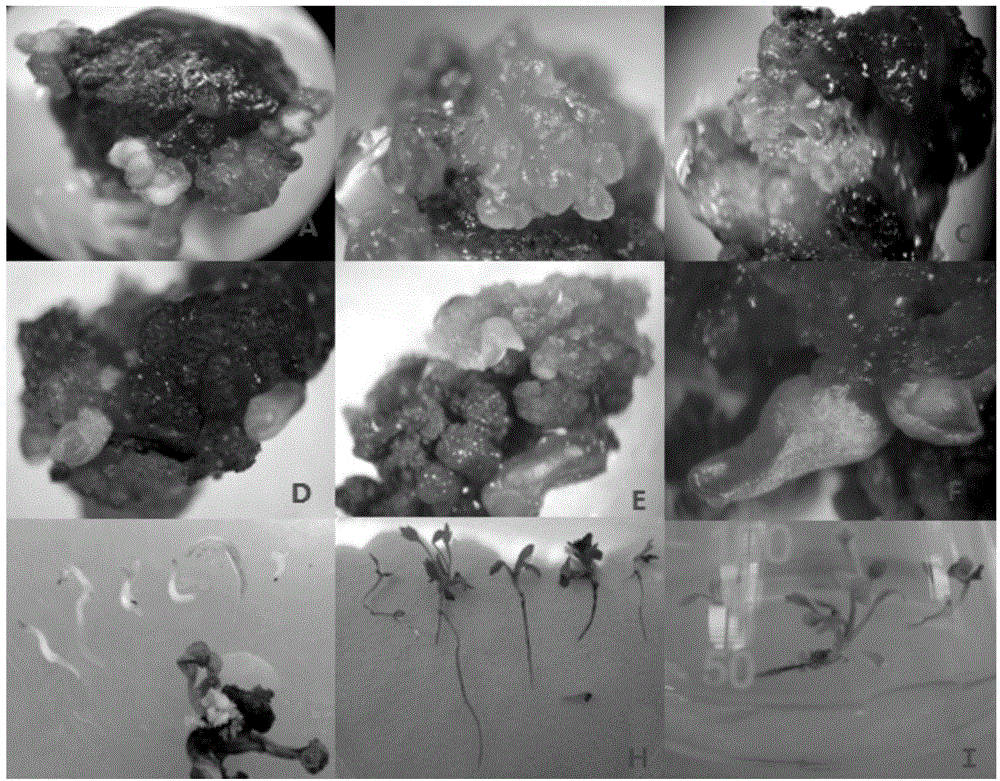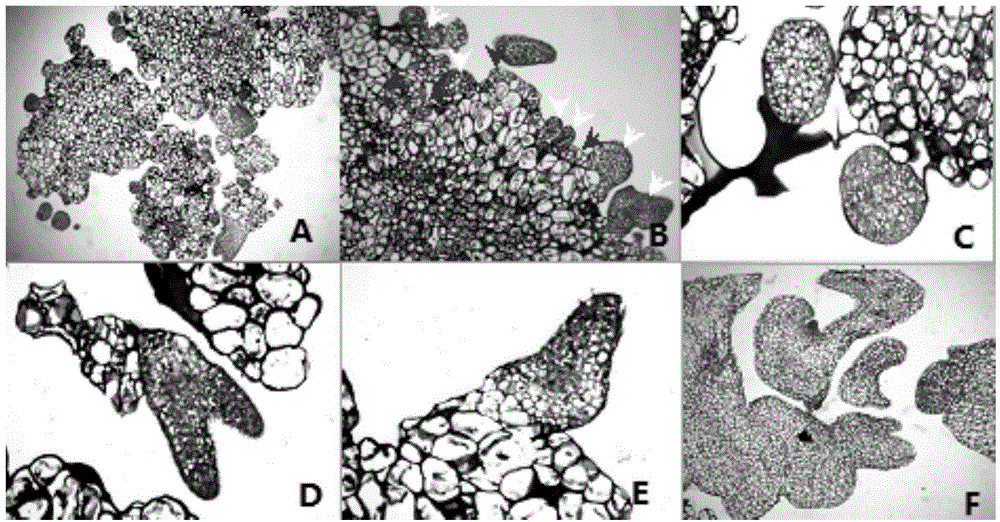Pulsatilla tongkangensis somatic embryogenesis and plant regeneration method
A technology of embryogenesis and pulsatilla, which is applied in the biological field, can solve the problems of difficult transplanting, low survival rate, and large market demand, and achieve the effects of fast reproduction, stable organ differentiation, and consistent genetic traits
- Summary
- Abstract
- Description
- Claims
- Application Information
AI Technical Summary
Problems solved by technology
Method used
Image
Examples
Embodiment 1
[0017] 1. Material preparation
[0018] The material is wild Pulsatilla pulsatillae, and the explants are young leaves.
[0019] 2. Surface disinfection of plant material
[0020] Rinse the leaves of Pulsatilla pulsatillae collected in the wild in tap water for 2 to 4 hours, then carefully wash with washing powder to clean the dust or microorganisms on the leaves, then rinse with sterile water, and then move to the ultra-clean workbench for the next step operate. Soak in 1:3 84 disinfectant solution (containing 1.13-1.53% sodium hypochlorite) added with 0.1% Tween-20 for 15 minutes, then wash with sterile distilled water for 3 to 5 times, and dry the surface moisture with sterilized filter paper. Until there are no water droplets on the surface of the explants, set aside.
[0021] 3. Embryogenic callus and somatic embryo induction
[0022] The sterilized leaves were cut into blocks with an area of 0.5 cm × 0.5 cm, cut evenly with a scalpel blade and scored 3 times withou...
PUM
 Login to View More
Login to View More Abstract
Description
Claims
Application Information
 Login to View More
Login to View More - R&D
- Intellectual Property
- Life Sciences
- Materials
- Tech Scout
- Unparalleled Data Quality
- Higher Quality Content
- 60% Fewer Hallucinations
Browse by: Latest US Patents, China's latest patents, Technical Efficacy Thesaurus, Application Domain, Technology Topic, Popular Technical Reports.
© 2025 PatSnap. All rights reserved.Legal|Privacy policy|Modern Slavery Act Transparency Statement|Sitemap|About US| Contact US: help@patsnap.com


